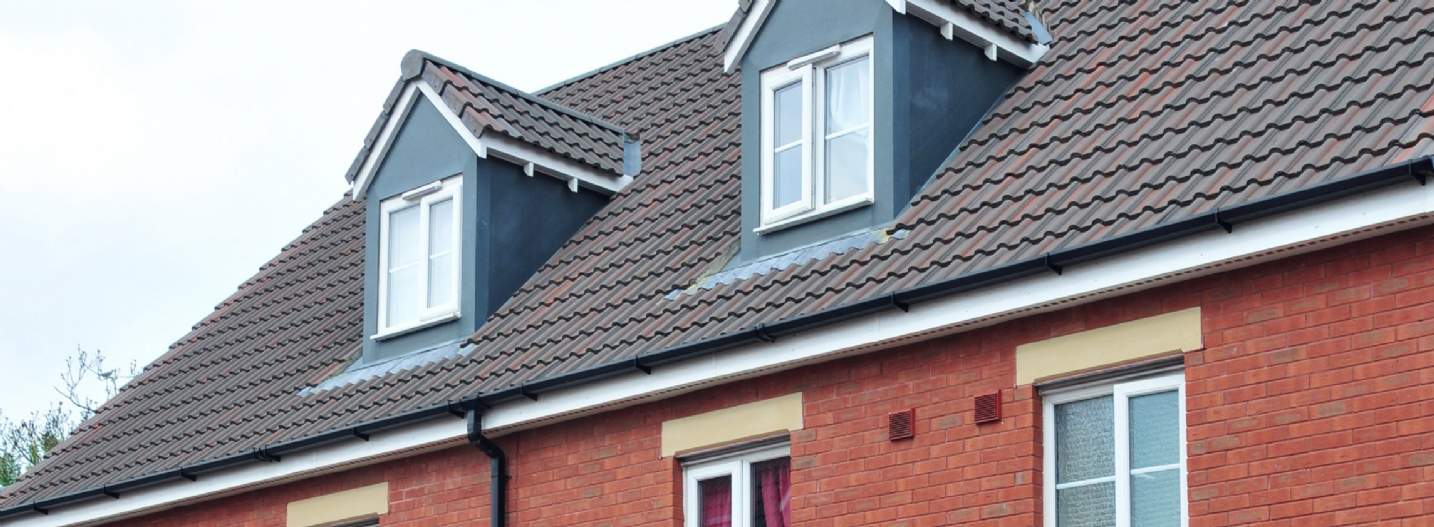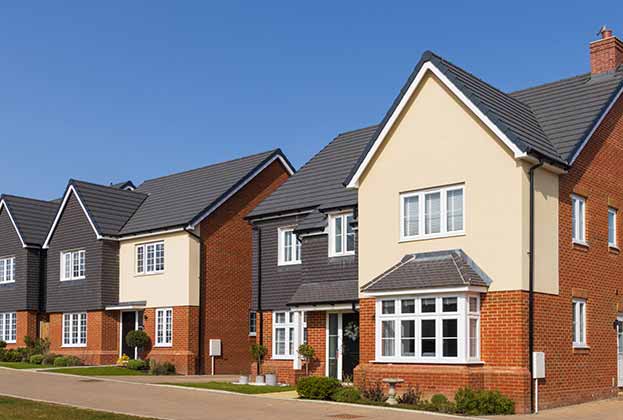There is significant and growing demand for Shared Ownership from consumers, particularly in a high interest rate world
Shared Ownership supports a key, and sizeable part of the housing market
While there are currently a little over 250,000 SO households across England, we believe there is far greater capacity for SO homes. SO, as an Affordable Home Ownership product, helps support the “squeezed middle” part of the housing market – households aspiring to home ownership but unable to make the leap without support. This is a vast, and underserved part of the housing market.
The average household income of an SO buyer is £32,200, far lower than the typical FTB (First Time Buyer) income of £64,000 – largely a consequence of a much higher proportion of SO users buying with a single income. The majority of SO buyers have household incomes between £25,000 and £43,000, according to our analysis of data from our sponsors. With approximately 1.4 million households in the private rental sector within this income range across the UK. There is significant potential to scale up SO to meet the pool of demand that SO may appeal to.
A useful benchmark for estimating the demand for SO is data from Help to Buy. This scheme also provided a low-deposit step onto the housing ladder, and SO has often been branded its successor (despite pre-dating Help to Buy by decades). Help to Buy supported an average of 37,000 buyers per year across England over the decade it ran for. In its absence, SO is well placed to pick up this level of activity.
Shared Ownership allows buyers to step onto the housing ladder earlier in life
Over half of SO buyers are single adults, with a further 30% being couples without children, according to data from DLUHC. This aligns with data from our sponsors, which show similar proportions. This contrasts with the distribution of all FTBs however, which have a greater diversity in household types.
SO buyers also tend to be younger than FTBs as a whole, with 70% of SO buyers under 40, compared to 50% of FTBs. This skew of SO buyers to younger and smaller households is partially a consequence of its affordability. It’s easier to buy a SO home solo, and at a younger phase of life compared to purchasing outright.
We’ve compared SO buyers to FTBs as, while SO is not restricted to FTBs, only 10% of SO buyers over the past five years were already owner occupiers, a trend that has been fairly stable for the past decade. The majority of SO buyers (82%) move directly from either living with family or from the private rental sector.
Only 4% of SO buyers have moved directly from the social rental sector, although some may have moved via the private rental sector first. Social rental tenants also have the option to buy their home via Right to Buy as an alternative route into home ownership.
What are the financial advantages to buyers?
SO is particularly appealing to buyers currently in the private rental sector but wanting a more secure form of tenure. The Government has been keen to reinforce this long-term security, by encouraging 990-year leases. It gives them the ability to start building some housing equity. SO makes this possible for many households with its much lower deposit requirements.
The average FTB uses a deposit of 24%, equivalent to £71,000 for a £300,000 home. Those using SO have an average deposit of just 7%, or £22,200. The average first tranche sale proportion is 43%, meaning that SO buyers are able to acquire £129,000 worth of housing equity, and occupy a £300,000 home with a far lower deposit than they would be able to do otherwise.
This ability to accrue extra equity also helps buyers springboard onto their next home, potentially moving from an SO home to a full ownership home even if they hadn’t staircased to 100%
Ed Hampson, Associate Director, Residential Research
SO is also accessible to downsizers wishing to release equity for retirement, for single person households with lower deposit/income, and to equity-rich income-poor households such as divorced persons, offering scope to stay in the home ownership market. It is more flexible than First Homes, which is only available for FTBs.
Both typical FTBs and SO buyers tend to buy with essentially the same Loan-to-Income (LTI) ratios, as while SO buyers have a smaller mortgage, they also have a lower income, putting them largely on par with LTIs in the open market.
House prices typically trend upwards over time, so being able to capture some of this growth is very appealing to households who would otherwise struggle to overcome that deposit hurdle. This ability to accrue extra equity also helps buyers springboard onto their next home, potentially moving from an SO home to a full ownership home even if they hadn’t staircased to 100%.
Shared Ownership is more appealing in a high interest rate environment
It’s not just the lower barrier to entry, but the ongoing costs for SO are typically lower when compared on a like-by-like basis with full ownership. This effect is magnified in a higher interest rate world in which the smaller mortgage required for SO reduces exposure to the higher interest rates. This is alongside starting rent on the retained equity being locked at 2.75% – someway below current mortgage rates and rental yields. This greater discount may help to drive additional demand for SO while rates remain high.
But what happens to these costs over time? Our prior paper shows that SO costs, with upward only rent movements in excess of inflation, do trend above other tenures in the long run, but it takes many years for this to happen – often decades, depending on the initial equity stake. In reality, owners will aim to staircase, increasing their equity and reducing their exposure to these escalating costs.
Read the articles within Shared Ownership report below


.jpg)
